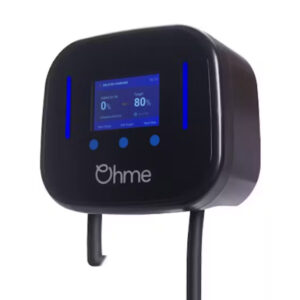Today is the final peace of the jigsaw for a workplace Wallbox EV charger installation at a group of Kia dealerships in Greater Manchester…
Brad is currently running a 30-metre cable to install an additional 22Kw EV charger.
Overall, it’s been quite a challenging project for both the dealership and ourselves.
You see, Kia’s new range of electric vehicles can charge at 22Kw on an AC charger, and Kia has stipulated that each dealership installs at least 2 22Kw EV chargers.
The challenge at this group of dealerships is they only have a 100Amp main fuse at each location, and they were using on average 30Amp’s continuously to run the operation, but when a kettle or a microwave was switched on, it would spike to 40Amp and above.
So, using 2 x 22KW EV chargers at the same time as making a brew or warming your lunch up could cause the main fuse to blow, which would stop the business operation, potentially for months.
And upgrading the main fuse would cost tens of thousands and take months to get done.
Our solution is to install 2 Wallbox Copper SB 22Kw workplace EV chargers, together with the Wallbox load balancing system.
This enables one charger to always operate at 22Kw and the other to operate at 22Kw, when there is available power to do so.
But when the load on the main fuse is too great, the second charger will reduce its charging power accordingly, and stop the main fuse from ever blowing.
…it’s a great solution from Wallbox and if you want to learn more, please contact us.


